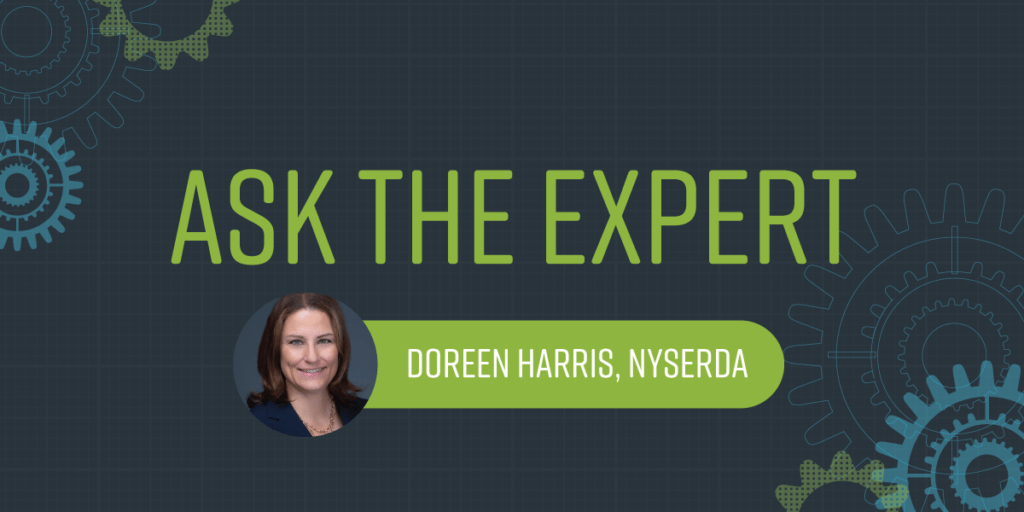For this edition of Ask the Expert we spoke with Doreen Harris, President & CEO of the New York State Energy Research Development Authority (NYSERDA). An engineer by training, Doreen is spearheading New York’s ambitious goals as the state transitions to a clean energy future.
What brought you to NYSERDA?
As an engineer in the private sector, it became increasingly evident that in the world of clean energy deployment, state government had the real impact. I joined NYSERDA’s large-scale renewables team in 2010.
What’s kept me here is that in the last 14 years, the clean energy industry has scaled pretty significantly, so the technical challenges and solutions are ever more expansive and interesting. Also, the level of ambition across the state and the world has expanded, as well as the ways in which we can make very significant impacts in relatively short periods of time. The progress we’ve made since 2010 is quite a source of pride both for me and NYSERDA.
Share some of your key accomplishments.
My background is largely technical, so I think I see this transition through a lens not everyone has: a lens of advancing solutions that can improve people’s lives while addressing the climate crisis.
When I think about the accomplishments I’ve had in my career, there are technical achievements for sure, but it’s really about deployment. Offshore wind is a great example of a policy that didn’t exist at NYSERDA in 2010 and now we have among the largest goals in the nation, with a project that is in commercial operation and many more in the pipeline. I’m extremely proud of that.
Another accomplishment was co-chairing New York’s Climate Action Council, which worked for years to develop a Scoping Plan laying out the pathways to achieving our climate objectives.
Tell us more about that.
State climate law requires no less than 35% of benefits are directed to communities with a goal of at least 40%. There are the objective aspects of that, i.e., who are you focusing on and what investments are we making in that respect?
Then there is the question of how we better integrate with those communities. One way is through our 12 Clean Energy Hubs, a statewide network of organizations on the ground serving as one-stop-shops to help people participate in programs, connect with workforce training opportunities, etc.
We also have to think about program design. We don’t know how best to serve historically marginalized communities and if you don’t ask the questions, you might think the solutions are something other than what they’d actually articulate. So, we formed an Energy Equity Collaborative to work with those who serve and represent these communities.
What are NYSERDA’s top goals for 2024?
There is a significant clean energy transition underway. However, we’ve had some specific challenges in the large-scale renewable sector. We’re implementing Governor Hochul’s 10-point action plan to address those challenges while continuing with projects toward our goals. That reset is a top priority.
Another priority is leveraging federal funding. The Inflation Reduction Act, Infrastructure law, Chips and Science Act—all of those monies are beginning to flow. New York is well positioned to compete for those funds and to deploy them.
We’ve also been working with the Department of Environmental Conservation to develop a Cap-and-Invest program to help us achieve emission reductions.
Any final words?
I’ve been at this for a long time. Where I sit today, I feel extraordinarily optimistic about the future we will and are realizing. We not only have policy clarity in the state, but federal support to leverage it. And when we think about the ways the green economy is growing, we see more people seeing themselves as clean energy workers. We’re able to fund programs and interventions to support a diverse set of workers.
It is a moment of transition, but it is also one of extraordinary promise and execution.

